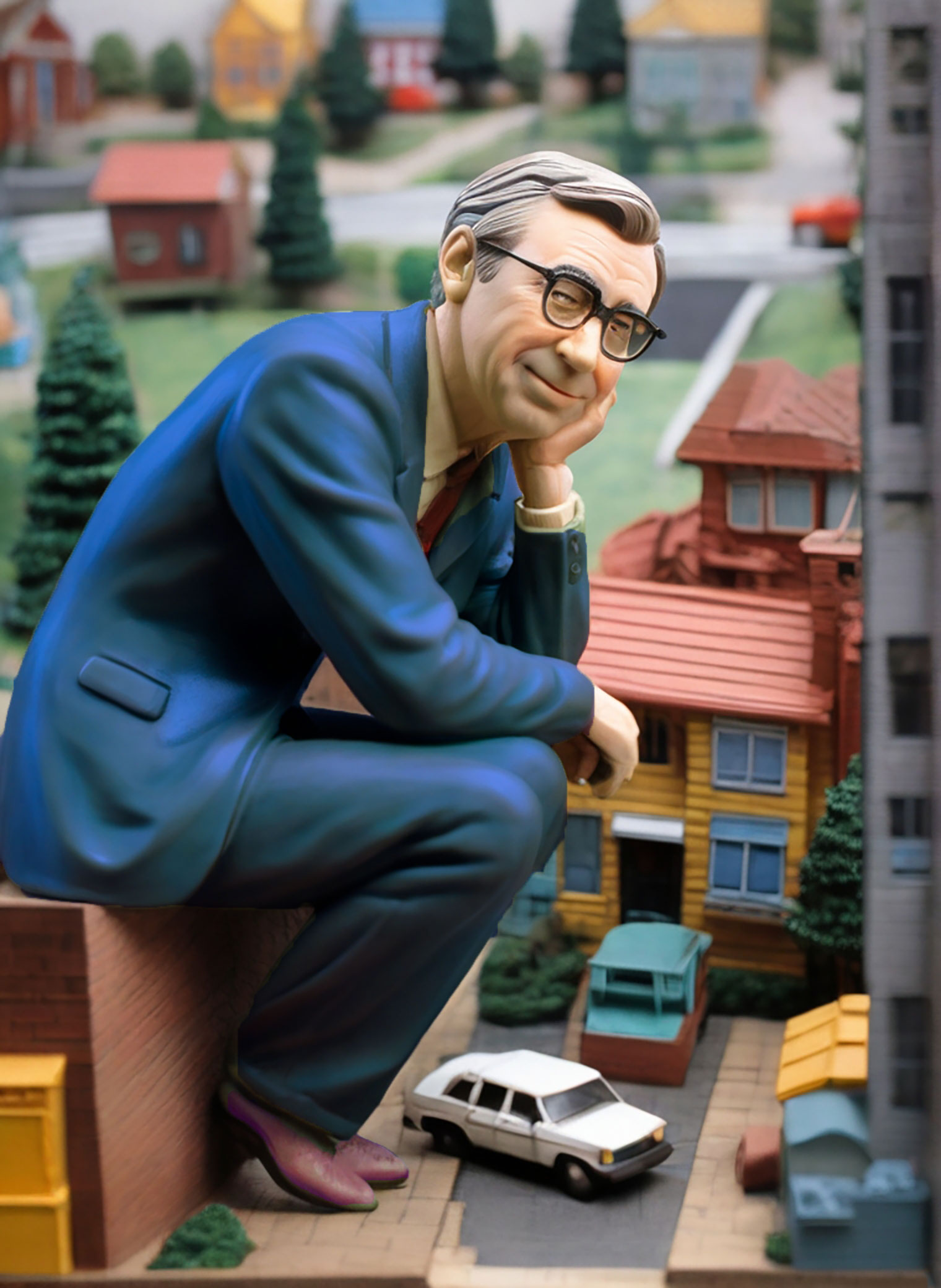Fred McFeely Rogers, better known as Mister Rogers, was a revolutionary force in children’s television who proved that kindness and authenticity could be powerful tools for education and social change. Born in Latrobe, Pennsylvania, he transformed children’s programming from pie-in-the-face slapstick to thoughtful discussions about feelings, friendship, and understanding differences. His iconic cardigan sweaters and sneakers became symbols of the comfort and consistency he brought to millions of children’s lives.
“Mister Rogers’ Neighborhood” ran from 1968 to 2001, standing out in the television landscape for its deliberately slow pace and direct, honest approach to complex topics. Rogers, an ordained Presbyterian minister, brought a spiritual depth to his work without ever being preachy. He tackled challenging subjects like death, divorce, and racism with remarkable sensitivity, always maintaining his core message that each person is special and worthy of love.
His famous 1969 testimony before the U.S. Senate Subcommittee on Communications, where he defended public television funding, demonstrated his unique ability to touch hearts and change minds. In just six minutes, he transformed skeptical Senator John Pastore from a critic to a supporter, showing the same gentle persuasiveness that characterized his work with children.
Beyond his television persona, Rogers was a skilled musician who wrote over 200 songs and a dedicated advocate for children’s welfare. His commitment to treating children with respect and addressing their emotional needs revolutionized our understanding of childhood development and education. Even decades after his passing, his message of unconditional love and acceptance continues to resonate, perhaps needed now more than ever.
Fred Roger’s Statue
The statue captures Rogers in his most characteristic pose; a gentle, contemplative figure cast in warm bronze, seated in thoughtful conversation with an unseen child. His iconic cardigan and tie are meticulously detailed, while his expression conveys the warmth and attentiveness that made him beloved by generations. The miniature model setting mimics his famous neighborhood model. The scale and positioning make Rogers appear as both a towering figure in children’s television and an approachable friend, perfectly embodying his unique ability to connect with children while teaching profound life lessons.
More Thinkers to Explore

Muhammad Ali

Maya Lin

John Lennon

